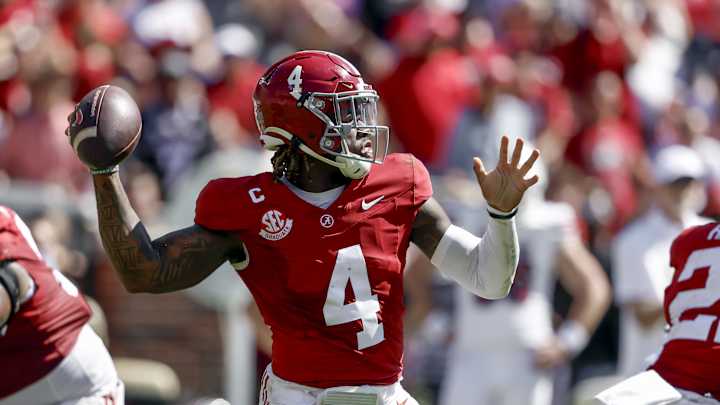## The Unexpected Departure: Jalen Millroe’s Exit from Alabama
Jalen Millroe’s decision to leave the Alabama Crimson Tide after five seasons sent ripples through the college football landscape, a move as surprising as it was significant. While not a guaranteed starter, Millroe was a highly touted prospect who represented a key piece of Alabama’s future at the quarterback position. His departure, announced [insert date and method of announcement, e.g., via social media], marks the end of a chapter filled with both high expectations and unrealized potential, leaving fans and analysts alike to dissect the reasons behind his unexpected exit.
Millroe’s five-year tenure at Alabama was a complex journey. Recruited as a four-star prospect, he carried the weight of immense expectations, the kind that come with playing quarterback for a program with such a storied history and a relentless pursuit of national championships. While he showcased flashes of brilliance throughout his time in Tuscaloosa, consistent starting opportunities remained elusive. He faced stiff competition from established veterans and highly-rated incoming recruits, a common scenario for quarterbacks in the fiercely competitive SEC.
The quarterback depth chart at Alabama was consistently a crowded battlefield. From established stars like Bryce Young and Tua Tagovailoa to other highly-regarded prospects, Millroe found himself battling for snaps throughout his career. While he contributed significantly on special teams and occasionally saw game action, he never truly seized the starting role. This consistent competition, while a testament to Alabama’s program strength, likely played a significant role in his decision to move on.
Beyond the competition, other factors could have contributed to Millroe’s departure. The pressure cooker environment at Alabama, known for its demanding coaching staff and high standards, can be challenging even for the most seasoned players. The relentless pursuit of excellence, while beneficial for team success, can also take a toll on individual players’ mental and emotional well-being. It’s plausible that Millroe felt the need for a change of scenery to better manage the pressures and find an environment where he could develop his skills and compete for a starting role without the constant shadow of intense competition.
Another significant aspect might be the limited playing time. While he appeared in games and even displayed impressive moments, the lack of consistent starts could have frustrated Millroe and hampered his development. The competitive nature of college football necessitates consistent playing time for quarterbacks to hone their skills, refine their decision-making under pressure, and build confidence. Without consistent game experience, it’s difficult to reach one’s full potential, leading players to seek opportunities elsewhere where they can gain more valuable experience.
The potential impact of NIL (Name, Image, and Likeness) deals cannot be overlooked. The advent of NIL has significantly altered the landscape of college athletics, providing athletes with opportunities to monetize their brand. It’s possible that Millroe’s decision to leave was influenced, at least in part, by his pursuit of more lucrative NIL opportunities. While this is speculative, the financial implications of NIL deals can significantly impact a player’s decision-making process, particularly when considering their long-term future.
Speculation regarding Millroe’s next move is already rife. He could opt for the transfer portal, seeking a program where he can immediately compete for a starting position. Numerous schools across the country would be eager to secure the services of a player with his talent and experience, even if it was largely accumulated on the sidelines. Alternatively, he might explore the NFL Draft, despite the limited playing time. His physical attributes and potential could convince scouts to take a chance on him, hoping to mold him into a successful professional quarterback.
In conclusion, Jalen Millroe’s departure from Alabama is a multifaceted event with no single definitive explanation. The intense competition, the pressure of playing for a powerhouse program, limited playing time, and potential NIL considerations all likely contributed to his decision. His five years in Tuscaloosa were a significant chapter in his life, one filled with both promise and unfulfilled potential. Regardless of his future path, his time at Alabama will undoubtedly shape his career, leaving a mark on his journey as a quarterback and as a student-athlete. His story serves as a reminder of the complexities and challenges faced by young athletes navigating the demanding world of elite college football. The football world waits with bated breath to see where this talented young quarterback will land and how his story unfolds in the next chapter of his career.

